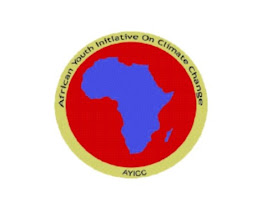Part 3: The Good, The Bad and the Kyoto Protocol
Yep! We are now
in part 3 of the Peeling Back the COP series! As promised in the preceding
post, we will deal with the protocol that embodies the efforts aimed at
reducing Green House Gas emissions – the Kyoto Protocol – in this part, and it
will span a number of posts. This is where parties (countries) were rewarded
with regards to the their Green House Gas emissions (GHGs), and a big tussle
ensued; it still exists today!
Birth of Kyoto Protocol
The Kyoto
Protocol came into force in 1995 after the Russian Federation ratified it, and
it was adopted at the 3rd Conference of Parties (COP 3) in 1997 in
Kyoto, Japan. The first commitment period of the Kyoto Protocol was from
2008-2012.
Climate Change Convention vis a vis The Kyoto Protocol
“Oh! Wait a minute, I am getting lost! What is the
difference between the Climate Change Convention (CCC) and Kyoto Protocol (KP)?”
Well, do not despair; the line between the two is
very clear. CCC was aimed at encouraging parties to reduce their GHG
emissions, while KP was tailored to legally
bind parties towards realizing their emission reduction targets. As easy as
that!
Principle underpinning the Kyoto Protocol
The main
principle underpinning the Kyoto Protocol is the principle of “common but differentiated responsibilities.”
As an example, think of a pizza, but this time a distasteful one. Logically,
most people would avoid eating such a pizza, and if they are compelled to do
it, then they will try to take the smallest piece possible – human nature!
Now, let us
imagine that the distasteful pizza represents the responsibilities for reducing
GHG emissions. In essence, we have all contributed to GHG emissions, but we
will be given a slice of the distasteful pizza whose size will correspond to
the degree of our GHG emissions.
Therefore, we
have all contributed to GHG emissions, but then the ones who have polluted most
will have to take the biggest responsibilities in reducing their GHG emissions.
Gases covered under the Kyoto Protocol
The Kyoto
Protocol covers six Green House Gases, namely carbon dioxide, methane, nitrous oxide, hydrofluorocarbons,
perfluorocarbons and sulphur hexafluoride.
The Good
Quite a number
of countries actually ratified the Kyoto Protocol, and they are considered as
the “good guys”.
The Bad
USA, Australia
and China, among other countries, are some of the biggest polluters in terms of
Green House Gas emissions, yet they have been playing cat and mouse with
regards to being legally bound by the Kyoto Protocol.
You can check
out the complete list of countries that have ratified the Kyoto Protocol, as
well as those which have not, here.
Conclusion
Well, that marks
the end of this piece. In the next piece, we will look at the mechanisms of the
Kyoto Protocol. See you then!
PS: As usual, if you are interested in contributing to this COP series, please send an email tombevakl@gmail.com and I will be glad to have you on board!
Useful links used in research:
http://unfccc.int/kyoto_protocol/items/2830.php
http://www.gpcnz.co.nz/Site/The_Kyoto_Protocol_/Overview.aspx
http://unfccc.int/kyoto_protocol/status_of_ratification/items/2613.php
http://unfccc.int/resource/docs/convkp/kpeng.pdf
http://unfccc.int/cop3/

Comments
Post a Comment